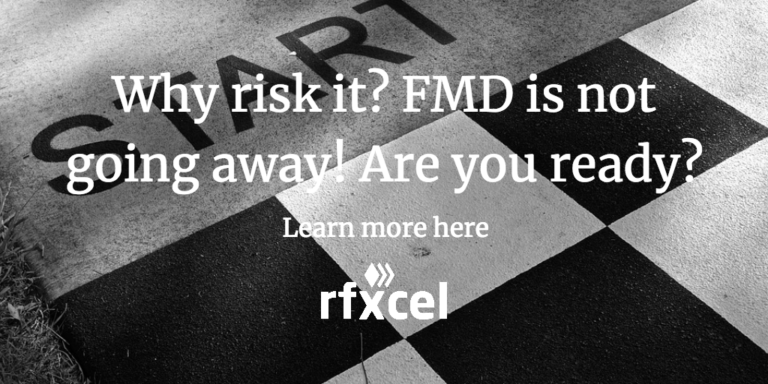The Falsified Medicines Directive (FMD) imposes strict serialisation requirements on pharmaceutical manufacturers, distributors and dispensers. By February 2019, Marketing Authorisation Holders (MAHs) will need to start uploading serialisation codes for almost all their prescription medicines to the European Medicines Verification Organisation (EMVO) hub for authentication with pharmacists at the point of sale. Those that can’t will simply be unable to sell their products in Europe.
More than thirty countries in the European Economic Area will have new rules for coding and verifying prescription medicines. Despite the significance of the regulation, there are some pharmaceutical manufacturers – and many pharmaceutical dispensers, including community and hospital pharmacies – who have yet to put a strategy in place to assure compliance.
The introduction of serialisation, designed to ensure the authenticity and traceability of individual medicines, promises to improve patient safety and create exciting opportunities for digital health. However, failure to comply with the EU regulation that mandates it means you cannot legally ship your product. No code, no trade. And those in the driving seat are MAHs. We’ve had two-and-a-half years of the three-year implementation window: now, what’s left to do?
Its key to mention, that those of you waiting for Brussels or Brexit to cancel FMD are wasting your time. Even if there is a delay, FMD is not going away and the UK is tied to it until at least Dec 2020.
It is clear that not everything will be ready by February 2019, especially at Pharmacy level, but that doesn’t mean the whole project will stop.
Therefore, rfxcel have put together their top tips to rapidly implement a cohesive serialisation solution.
Simple FMD projects work best.
Only make system linkages you need. Usually (for manufacturers) that means MAH to CMO and MAH to EMVO. For distributors and dispensers it means to your national system (NMVO). While it would be possible to integrate your FMD solution with your ERP software, warehouse system, dispensing software – even your Apple watch if you want to – right now the focus should be entirely on the critical path for FMD compliance. Starting with a standalone approach as part of a roadmap to deeper integration is the best balance of risk and ROI.
Spend money on those that matter.
For every euro spent on vendor technology, several euros need to be spent on your own people and processes to bend them into shape. Don’t skimp on this bit. Pack-level traceability changes everything all along the supply chain. If people carry on with old ways of working your FMD project will fail: expensively.
Experience outweighs the price.
Saving a few thousand euros using unproven, but cheap serialisation vendors, is a false economy if you can’t sell or dispense products by next February. It is too late for home-made solutions or inexperienced me-too suppliers. Competition means that prices are already pretty keen amongst the market leaders. Don’t chase the last cent.
You still have some time.
There is still some time to get ready if you just need software to manage and report serial numbers (e.g. to the European Medicines Verification Organisation, EMVO) or if you’re a downstream distributor or pharmacy needing to verify and decommission packs. If you haven’t started, but can make quick decisions and take standard options, ACT NOW, and you could have your software implemented within the next few months.
Take action before regulators remove your right to trade.
The fact remains that many companies are still some distance from being fit for purpose. The complexities of serialisation mean that a failure to act now could make it extremely difficult to complete implementation in time for the FMD deadline, or at least to guarantee a seamless end-to-end process.
Moreover, with the fees for registering with EMVO and other affiliate repositories increasing, the internal costs of your project will inevitably rise the longer you wait. However, the biggest price of non-compliance will be your inability to ship product. So why risk it?
Contact us below to learn more about serialisation requirements and how rfxcel can help you meet them in time.





